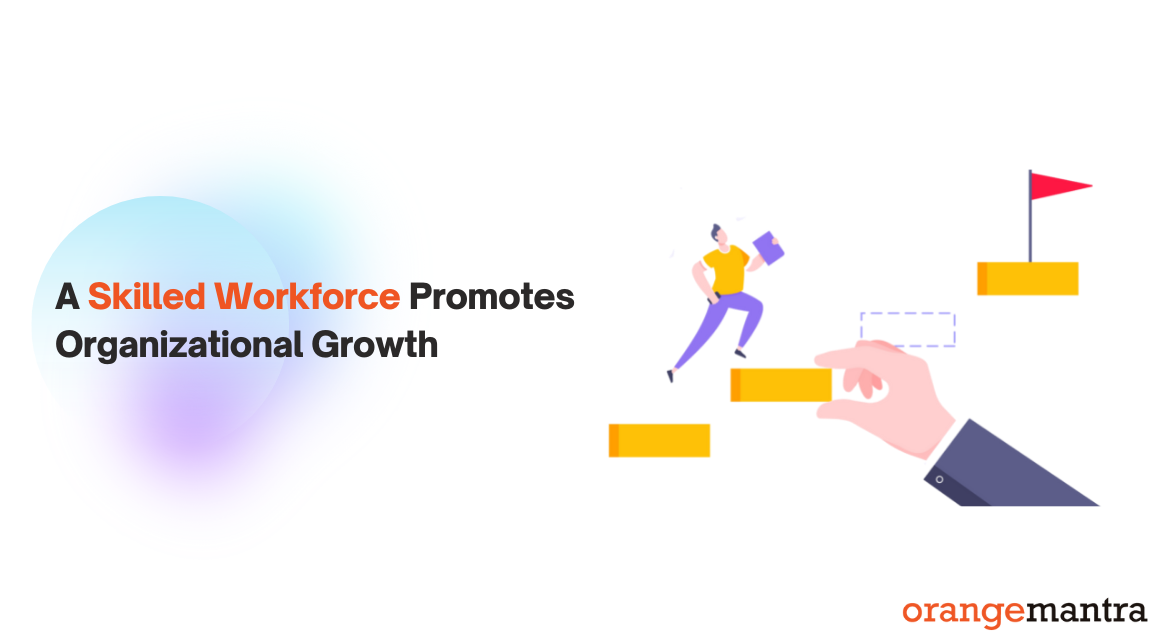No one could have ever imagined a crisis like the Covid-19 pandemic. On a whim, it forced many companies to change the way they work overnight. With the virus shutting down markets, businesses worldwide saw a drastic transformation of their day-to-day operations, turning them partially or fully digital.
It incited initial pressure in the minds of the workforce. The pressure was about how to adapt to the new way of working remotely. But this was the blueprint for long term growth for many companies that invested much in upskilling the employees about new ways of working.
To understand it better, let’s take an example of one pharma company that experienced 10,000 sales reps before the pandemic. After the emergency crisis, the company switched 100% to the remote model. And when the containment phase gradually lifted, the company scaled back its remote-work model partially. Now, the pharma company is planning to go hybrid with 30% online and 70% offline by leveraging the freshly developed skills of the workforce.
Thus, changing technologies and new ways of working are not something of forced decision. Instead, it’s a necessity to fill the skill gaps, adapting technically advanced attributes and rapidly changing to conditions.
Moreover, the coronavirus pandemic has made this thing necessary for enterprises to upskill and reskill the workforce to new roles and activities. It is more about being dynamic, working in a hybrid operational mode, or even learning the virtues of AI and IoT.
Upskilling employees will strengthen enterprises for having a futuristic, disruptive workforce and adapt to change.
What is Upskilling?
Upskilling means enhancing the skills of your current workforce to learn new things, technologies, ways of working, and more. It is the process of training and developing employees to expand their skillsets, becoming more competent, adapting to the changes, and creating a significant competitive advantage. Most importantly, emerge strongly in rapidly changing working conditions and advancement in technologies enterprises by upskilling the workforce.
Why Do You Need Upskilling?
The need to upskill the workforce of your organization is necessary in two ways. Firstly, due to the uncertainty of the pandemic, learning leaders have to keep the workforce ready for any situation and equip them with the skills of tomorrow.
Secondly, “thinking machines” continue to take over the responsibilities of humans. Many are worried about automation replacing the manual workforce and putting many jobs at risk. In fact, it has been predicted that by 2025, automation and a new division of labor will disrupt 85 million jobs annually. However, 97 million new jobs will be created with that advanced skill set. Therefore, attaining a competitive advantage ahead demands the right skill set of employees.
How Upskilling Employees Benefit Your Organization
If skills are valuable commodities, then upskilling is here to meet the challenges of the constantly changing business ecosystem. All these helps make the current workforce a valuable asset to the company. Thus, enterprises can hire a new skilled workforce but investing time, effort, and energy into the current one evolves over time.
Now, let’s take a look at the benefits of upskilling.
- Reduce Attrition Rates
Changing job roles frequently is the reason for increasing the skills gap among professionals. As per the study, several HR professionals believe that there is a significant gap of 56% of the skill set of the existing employees. And the gap would increase from moderate to severe.
It emphasizes the need of bestowing new learning and development opportunities for employees to remain employable. It is also necessary to keep up to date with high-demanding skill sets with changing times. Because today’s skills will become obsolete in the next 4-5 years.
Thus, by investing in upskilling the existing employees, organizations can:
- Increase the professional value of the workforce.
- Make them believe they are a worthy investment of the company.
- Boost morale, increase productivity and increase retention rate.
- Competency Development
By Upskilling the workforce, the enterprises are not only investing in nurturing the human capital but also developing core competencies in areas of expertise. Companies like Apple, IBM, Intel, Sony, Volkswagen, GE, Tesla, Ford, PayTm, Coca Cola, McDonald’s and many more are known for their ingenuity, for the out-of-box brilliance and excellence they bring on the desk in the format of their solutions and products. The minds working behind these indigenous pieces of creativity and intellect didn’t stop once having entered the business world. Their skills were identified, and organizations have invested in nurturing and upskilling these valued resources to become a formidable asset in future.
As per a recent Gartner survey of 113 learning and development leaders, 71% said that more than 40% of their workforce has needed new skills due to changes to work brought on by COVID-19.
(Source: https://www.gartner.com/smarterwithgartner/future-of-work-tops-hr-priorities-for-2020-21)
- Continuous Learning Culture at Workplace
Every employee of a company needs to be valued. For this reason, learning & development leaders need to support every professional’s career growth through a continuous learning process.
By continuous learning means, imparting job-based skills and knowledge to stay successful in the long run. Additionally, let the workforce feel valued with the learning & development support from the company.
So, to create a sustainable work culture, you can adapt the following things:
- Create awareness and regularly inform employees about new training and learning sessions.
- Promote self-directed learning to upskill employees. Provide an easy to access learning library with resources being organized, easy to search, and access.
- Connect personal and professional goals to every single upskill training program to know its impact in the future.
- Make training a necessary thing for all the employees.
- Change Will be Easy to Handle
It is a growing fact that strategies and business models change, and companies evolve with changing time. The new work culture demands a new skill set of the workforce to adjust to the changes.
Upskill is a profitable initiative to equip employees with the most sought-after skills. Although no one can predict a change within the organization, still, prepare the workforce to adjust to the changes as they come at the forefront.
By upskilling your employees, you can boost their ability to accommodate any change in the working model, technology, and more.
Upskilling As a Way to Ensure Resilience & Growth
Make upskilling of talent a necessary priority now, not just for the business, but also reminding employees as a valuable asset. Their development and progression must be of utmost importance to enhance productivity, increase engagement, improve delivery, and boost retention rate. In short, upskilling paves the way for helping the organization to cope up with unprecedented time and the fast-changing business environment.
Also, note the fact that upskilling your employees does not happen overnight. It requires strategic planning, creating a collection of training modules, getting employees excited, ready to learn, and more. Ultimately, take your time creating a continuous learning scenario for employees to learn more and the organization to grow and thrive.
Frequently Asked Questions
- What is the Need to Upskill the Workforce?
In today’s competitive business environment, it has become a great necessity to provide new learning skills and improve the knowledge of the workforce. The fast-paced digital world demands an upskilled workforce who knows better than the other and are already ready to learn.
- What is the Difference Between Upskilling and Reskilling?
Upskilling refers to the process of letting employees learn new skills and gain extensive knowledge as per their current field. On the other side, reskilling is all about allowing professionals to learn new skills to get a new profile or job or start their own work.
- How to Upskill the Current Workforce?
There are various ways companies can adopt to upskill the workforce. It could be like aligning specific training sessions, instill a coaching culture, set up the monitoring functionalities, dividing training into small learning sessions, leverage the internal talent, and more.























